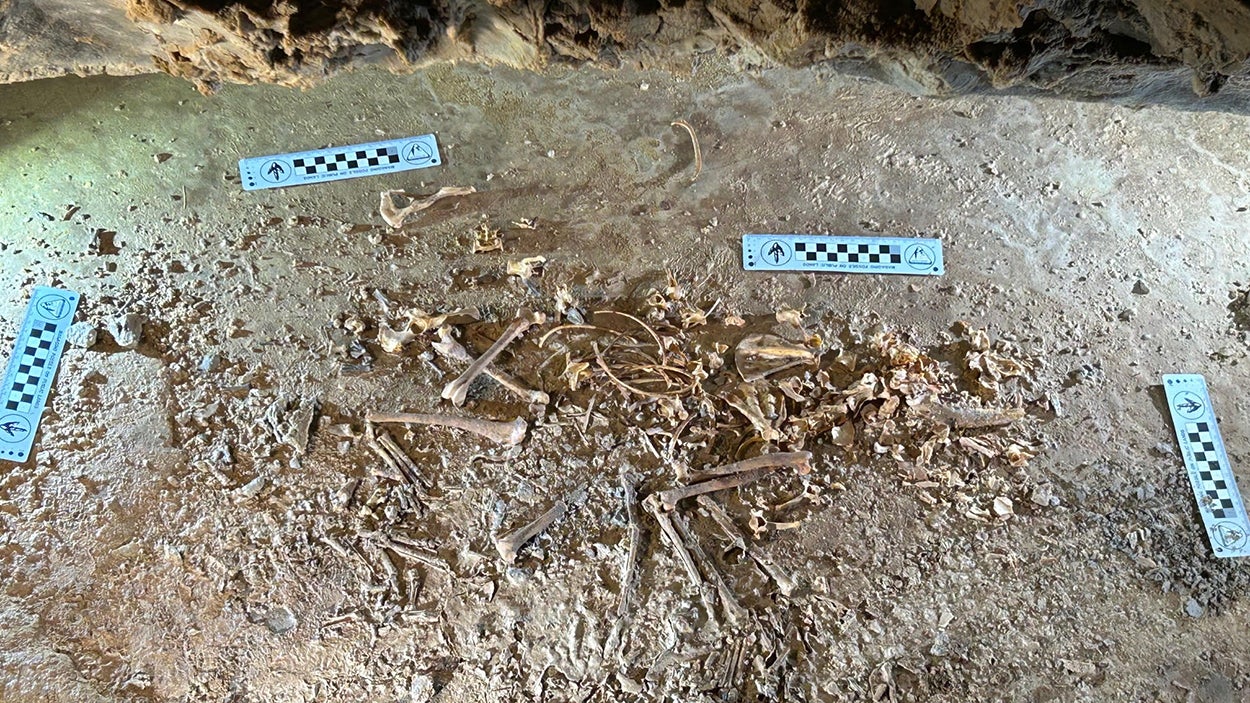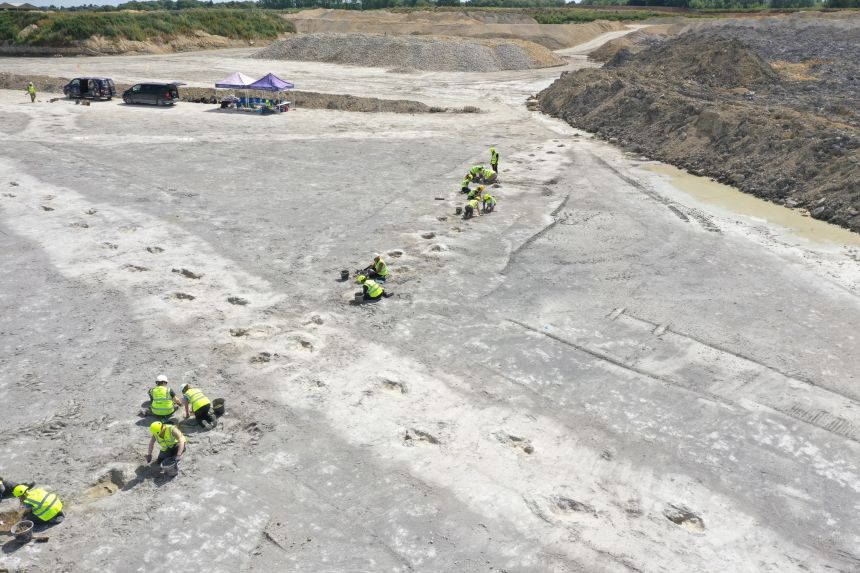VERNAL, Utah — A nearly complete skeleton of a red fox dating back to the Ice Ages has been unearthed in a northeastern Utah cave.A team of scientists from the Utah Division of State Parks and the USDA Forest Service Ashley National Forest, along with a group of Utah cavers, made the discovery in Whiterocks Cave in the Uinta Mountains at about 8,600 feet elevation.CAN ANCIENT TREE RINGS HELP EARTH PREPARE FOR DANGEROUS SPACE WEATHER?”This specimen is one of the oldest directly dated records of the red fox species,” said Ice Age mammal expert Greg McDonald, a retired National Park Service paleontologist. “The first in Utah, but among the oldest in North America.”Radiocarbon dating revealed that the fox skeleton is about 26,000 years old, meaning it was already in the cave long before humans started farming and even before the Great Pyramids of Giza were built.PREHISTORIC SABERTOOTH SKULL FOUND IN IOWA LIKELY LAST OF SPECIES TO WALK EARTH, RESEARCHERS SAY”It was a gorgeous specimen,” said the Utah Field House of Natural History State Park Museum’s John Foster, who was the project’s lead organizer. “Almost the entire animal lying where it had been for so long, nearly every bone intact and well preserved. We don’t often see specimens like that.”ARCHAEOLOGISTS UNEARTH 13,000-YEAR-OLD MASTODON SKULL IN IOWAAccording to Utah wildlife officials, red foxes (Vulpes vulpes) are the most widely distributed terrestrial carnivores in the world. They appeared in North America from Eurasia between 300,000 and 130,000 years ago. Since then, most red foxes in North America have lived in the western and northern parts of the continent.The remains were found in a remote section of the cave’s back, partially articulated and lying on its left side, Utah State Parks said. It was given the name ‘Roxy’ following a museum-wide poll.OLDEST SADDLE DISCOVERED AT BURIAL SITE IN NORTHWEST CHINAThe team of paleontologists said they were unsure how the fox ended up so deep inside the cave.”Perhaps the most common question is how the red fox got nearly half a mile into the back of the cave in complete darkness,” said Ashley National Forest geologist David Herron, who helped plan and lead the expedition.Wildlife officials said the fox skeleton was found several years ago but was never collected due to the difficulty in getting fragile bones out of the cave and down a mountain. After additional planning efforts, the team decided to go in this past summer.The entire expedition took the team of nine nearly 16 hours to complete.WHAT ONE ROCK ENDURED TO BECOME THE LARGEST, FLAWLESS DIAMOND IN THE WORLDWildlife officials said not many Ice Age animals have been found in northeastern Utah. Before Roxy, the only major discovery was a camel shin bone found near Vernal in the 1980s. After scientists study the bones, some will be displayed at the Utah Field House of Natural History State Park Museum in Vernal.”Roxy has finally seen the light of day again after 26,000 years in total darkness,” Foster said. “We look forward to sharing her with visitors soon.”
/
January 2, 2025
Skeleton of 26,000-year-old red fox unearthed in Utah cave among oldest in North America







